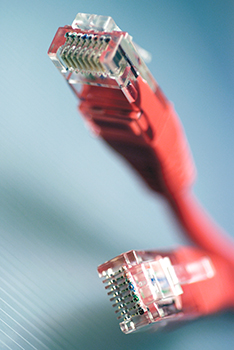 April 15, 2015 – Most Americans have become dependent upon access to the Internet at any time of the day or night, no matter where they are located. People use smart devices to check emails, get directions, answer fact questions, play games, and watch videos. They have multiple devices connected to home Wi-Fi networks, and increasingly watch video content over the Internet rather than traditional cable and satellite systems.
April 15, 2015 – Most Americans have become dependent upon access to the Internet at any time of the day or night, no matter where they are located. People use smart devices to check emails, get directions, answer fact questions, play games, and watch videos. They have multiple devices connected to home Wi-Fi networks, and increasingly watch video content over the Internet rather than traditional cable and satellite systems.
If the freedom to open Internet access that people have come to expect suddenly ceased or was limited, millions of Americans would likely be outraged.
On Feb. 26, 2015, the Federal Communications Commission (FCC) sought to protect a free and open Internet (also referred to as “net neutrality”). By a vote of 3 to 2 along party lines, the FCC decided to issue its “Open Internet Order” (the Order).
The Order was officially released on March 12, 2015, and was published in the April 13, 2015, Federal Register.
Lawsuits have already been filed and will likely be heard by the U.S. Court of Appeals for the D.C. Circuit. This is the same court that in 2014, in Verizon v. FCC, 740 F.3d 623 (D.C. Cir. 2014), struck down many of the rules established by the FCC in its first open Internet order issued in the proceeding: In re Preserving the Open Internet, 25 F.C.C.R. 17905 (2010).
Open Internet Order Specifics
The FCC sees the Internet access marketplace as “two-sided” with services used by both end users and edge providers (e.g., Google, Netflix). And, of course, in between are the Internet Service Providers (ISPs) (e.g., Comcast, Verizon, AT&T) who the FCC found in the Order to have the ability and the potential incentive to act as powerful “gatekeepers” between the end users and the edge providers.
 Michael Varda (U.W. 1974) is an assistant general counsel with the Public Service Commission of Wisconsin. He specializes in telecommunications law, wholesale energy markets, and electric construction and rate cases. He is a past chair (2012-13) of the State Bar of Wisconsin’s Public Utilities Section.
Michael Varda (U.W. 1974) is an assistant general counsel with the Public Service Commission of Wisconsin. He specializes in telecommunications law, wholesale energy markets, and electric construction and rate cases. He is a past chair (2012-13) of the State Bar of Wisconsin’s Public Utilities Section.
 Judd Genda (U.W. 1996) is a partner at Axley Brynelson LLP, Madison, and member of the firm’s Executive Committee. He chairs the State Bar of Wisconsin’s Public Utilities Section and actively represents businesses involved in the provision of telecommunications, video, and broadband services in all aspects of their business.
Judd Genda (U.W. 1996) is a partner at Axley Brynelson LLP, Madison, and member of the firm’s Executive Committee. He chairs the State Bar of Wisconsin’s Public Utilities Section and actively represents businesses involved in the provision of telecommunications, video, and broadband services in all aspects of their business.
The FCC concluded that the current standard of “commercially reasonable practices” as among the ISPs when interconnecting with one another, and when selling their services to either “side” of the market, was simply insufficient to prevent potential abuses and ensure the openness of the Internet.
The FCC’s prescription is the 400-page Order consisting of three fundamental parts. First, the Order establishes rules governing the offering of “basic Internet access service” (BIAS) by any ISP. Second, in a declaratory ruling, the Order reclassifies BIAS as a “telecommunications service” subject to Title II of the Communications Act of 1934 (Act). Third, the Order creates a “light-handed” regulatory scheme through the wholesale forbearance of the application of many regulations under Title II.
The Order’s initial part establishes three basic “bright-line” rules against: 1) blocking – denying access to any lawful content, applications, services, and devices; 2) throttling – degradation of any lawful content, applications, services, and devices; and 3) paid prioritization – payment to manage an ISP network to favor particular content, applications, services, or devices of Internet communications.
The Order supplements these rules with a regulation prohibiting any unreasonable “interference” or “disadvantage” to end users’ ability to use BIAS or lawful content, applications, services, and devices, or to edge providers’ ability to make lawful content, applications, or services.
The second part of the Order is the declaratory ruling that revisits the classification of BIAS. In this regard, the Order represents a major about-face for the FCC as to treatment of BIAS. Starting in 2002, in a string of four orders over five years, the FCC treated the provision of BIAS, regardless of the technology platform (e.g., DSL, cable, mobile provider), as the offering of an “information service” and not as a “telecommunications service.” As such, BIAS offerings were largely unregulated and in a distinctly different regulatory category from Ma Bell’s plain old telephone service, historically regulated under Title II of the Act.
However, with the Order, the FCC makes a 180-degree turn and reclassifies BIAS as a Title II telecommunications service subject to sections 201 and 202 of the Act, as well as section 706 of the Telecommunications Act of 1996 (1996 Act). Significantly, the Order includes mobile BIAS as a Title II service, based upon a redefinition of “public switched network” tied to the use of IP addresses as well as telephone numbers. This latter holding comes over a vigorous dissent from Commissioner Ajit Pai that 47 U.S.C. section 332(d) and the long-understood FCC definition of “public switched network” utterly preclude such a reading.
The last part of the Order features the FCC using its unique forbearance authority in Section 10 of the 1996 Act to forebear application to ISPs of certain statutes and regulations, thereby establishing what the FCC considers a “light-handed” regulatory regime. Commissioner Pai again strongly dissented that the majority’s action was without the necessary findings of existing competition to control misconduct in lieu of regulations, as required by Section 10(b) and a host of prior FCC decisions interpreting Section 10 of the 1996 Act.
The Public Furor
The intensity of the public debate between the various directly affected stakeholders was evidenced by more than 4 million public comments received by the FCC. Proponents of the reclassification of BIAS (President Barack Obama, Democratic legislators, and consumer groups) argued that the users, both end users and the edge providers of the Internet, will all be treated equally. Fair competition will be promoted, and consumers in particular will not be denied access to lawful Internet content through blocking, the subterfuge of “throttling” or unannounced degrading of service, or the practice of “paid prioritization” for specific traffic or users.
Opponents (ISPs – e.g., Comcast, AT&T, Verizon, and Republican legislators) argue that the Order imposes unnecessary regulation and uncertainty, was not properly noticed for a fair public opportunity to comment, will likely increase consumer costs, and, contrary to FCC predictions, will stifle innovation and investment.
Litigation has already commenced, and even before the Order was issued at least one Republican Senator was promising new legislation to at least preserve the regulatory “information services” treatment for BIAS. Given the enormous interests at stake and if the Order is to deliver its promised benefits for an open Internet “highway,” it must survive a likely detour through the mires of litigation and attempts at restraining legislation.
Implications for Attorneys
The Order is not some rarefied “Washington issue.” It has immediate implications locally. To enforce the principles that will sustain an open Internet, the FCC has significantly opened the door to legal challenges to ISP practices. The Order offers new avenues by which a lawyer may assist clients in dealing with the Internet, a critical part of many businesses and a substantial and expensive necessity for many consumer households. The general standard in new 47 C.F.R. section 8.11 requiring no unreasonable interference or undue advantage among end users and edge providers, provides ample room for debate as to what it means. At this time, it is wholly unclear whether even current services in the market, such as (as Commissioner Pai’s dissent observes) T-Mobile’s Music Freedom service that streams music to mobile customers without counting against their data allowances, can satisfy the standard.
The FCC is also introducing a new enforcement mechanism for BIAS offerings of ISPs. In a first for the agency, the FCC is establishing (in 47 C.F.R. section 8.18) a framework under which a stakeholder may secure in advance an advisory opinion as to an Internet access offering’s compliance with the rules, much like how the IRS provides advisory opinions relative to the tax code. In addition, the FCC created a new formal complaint procedure specific to BIAS offerings.
Conclusion
The Open Internet Order is an order so broad reaching and so dramatic in its total reversal of regulatory treatment that the saga will not close with the rules quietly going into effect – assuming they are not enjoined. In its attempt to protect the open Internet, the FCC has pried Internet from the “information service” classification and placed it, with the many forborne statutes of the Act, into a new kind of regulatory regime never previously tested. The FCC’s resort to an advisory opinion mechanism is evidence of how “open” the standards are under the new Title II regime. The need for the opinion mechanism is tantamount to a call for legal – and practical – counseling by attorneys guiding any stakeholder, whether an end user, an edge provider, or an ISP.
